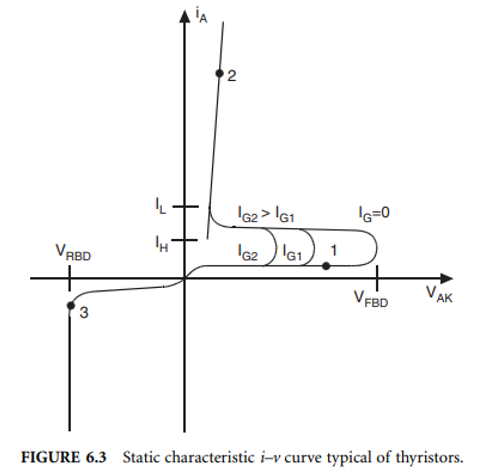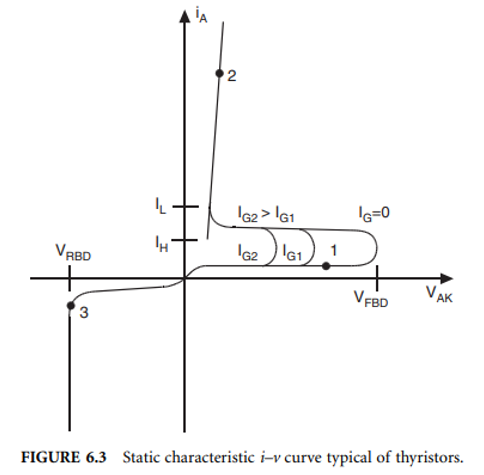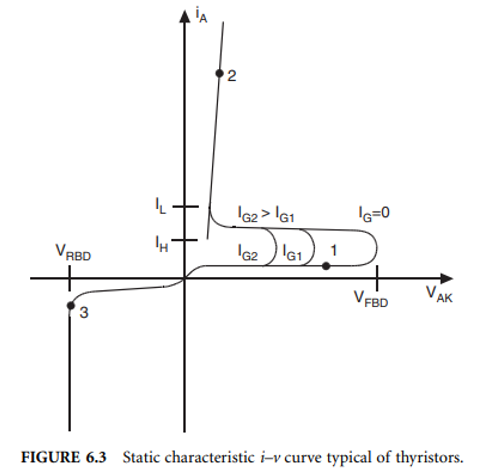Thyristors
1/14
Earn XP
Description and Tags
Name | Mastery | Learn | Test | Matching | Spaced |
|---|
No study sessions yet.
15 Terms
What is a thyristor?
A thyristor is a four-layer (PNPN) semiconductor device with three terminals - anode, cathode, and gate - that acts as a controllable switch for high-power applications.
What is another common name for a thyristor?
Silicon Controlled Rectifier (SCR).
How does a thyristor differ from a transistor?
A transistor is fully controlled and linear — it turns on/off directly with a gate or base signal.
A thyristor is half-controlled and bistable — once triggered, it stays on until current drops below the holding level.
Transistors switch faster for low-power or DC circuits; thyristors handle slower, high-power AC control.
What are the three terminals of a thyristor and their functions?
Anode (A) main current input; Cathode (K) main current output; Gate (G) trigger input that controls turn-on.
Explain the forward-blocking and forward-conducting states of a thyristor.
In forward-blocking, the anode is positive but the gate is not triggered, so only leakage current flows. When the gate is triggered, the device switches to forward-conducting, allowing large current flow with a small voltage drop.
What is the latching current (IL)?
The minimum anode current required to keep the thyristor on immediately after triggering.
What is the holding current (IH)?
The minimum anode current required to keep the thyristor in conduction after it has been on for some time; it's lower than IL.
How is a thyristor turned on?
By applying a short positive pulse to the gate while the anode is positive relative to the cathode.
How is a thyristor turned off?
By reducing the anode current below IH (usually by reverse-biasing or using a commutation circuit).
What is "latching" in a thyristor?
Once triggered on, the device stays conducting even if the gate signal is removed, as long as current > IH.
Why are snubber circuits used with thyristors?
To limit high dv/dt or di/dt transients during switching and prevent false triggering or device damage.
List some common applications of thyristors.
AC motor speed control, light dimmers, controlled rectifiers, voltage regulators, and inverters.

Describe the I-V characteristic curve of a thyristor.
The curve shows three regions: (1) Forward blocking region with small leakage current; (2) Breakover point where switching occurs; (3) Forward conduction region with low voltage drop and high current flow.

Describe where latching and holding current appear on the thyristor I-V curve.
IL is the minimum current needed to transition into conduction after triggering; IH is the lower current level where conduction ceases as current falls.

Explain how gate current affects the I-V curve of a thyristor.
Higher gate current lowers the forward blocking voltage needed for turn-on, shifting the breakover point left on the I-V curve.